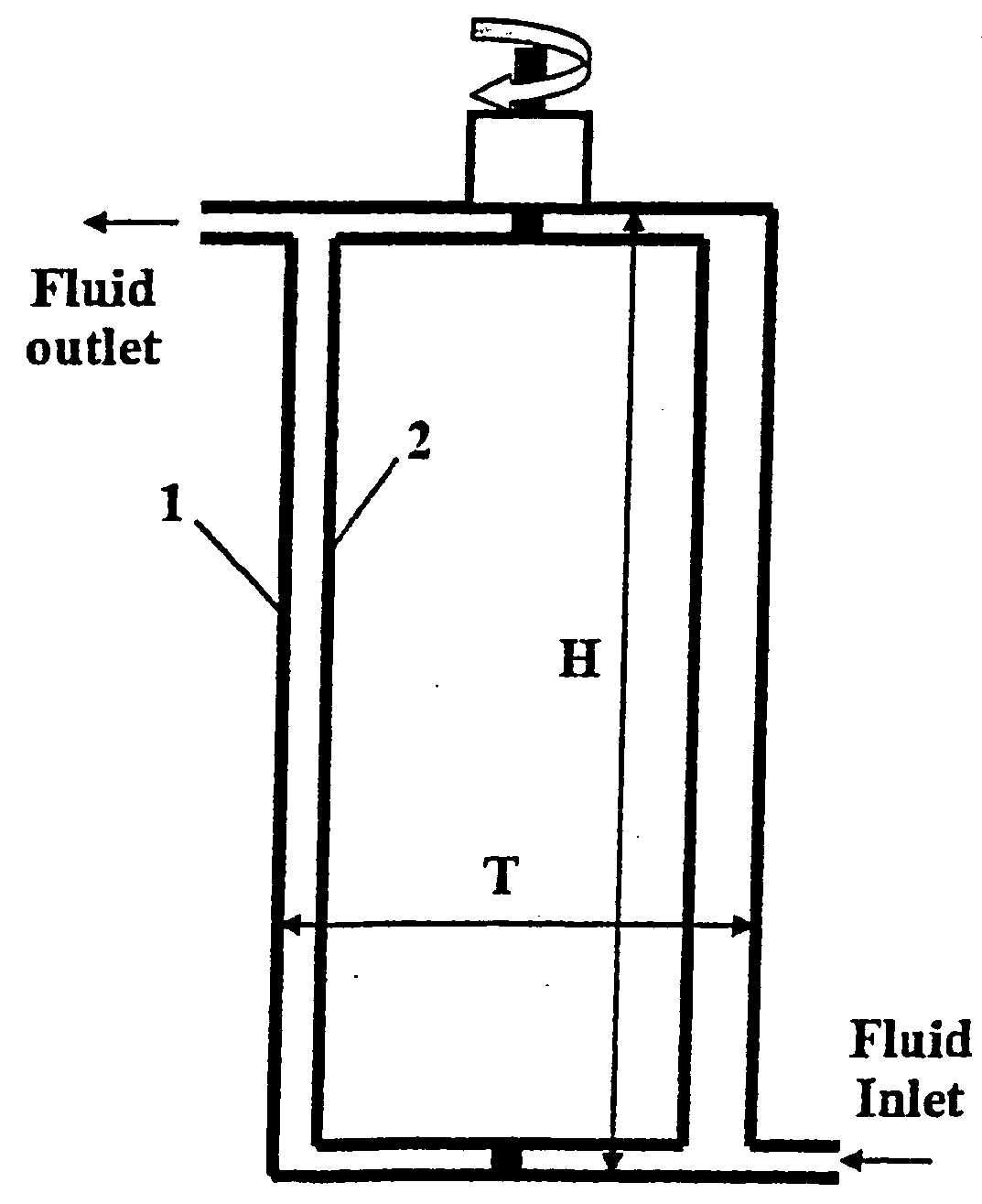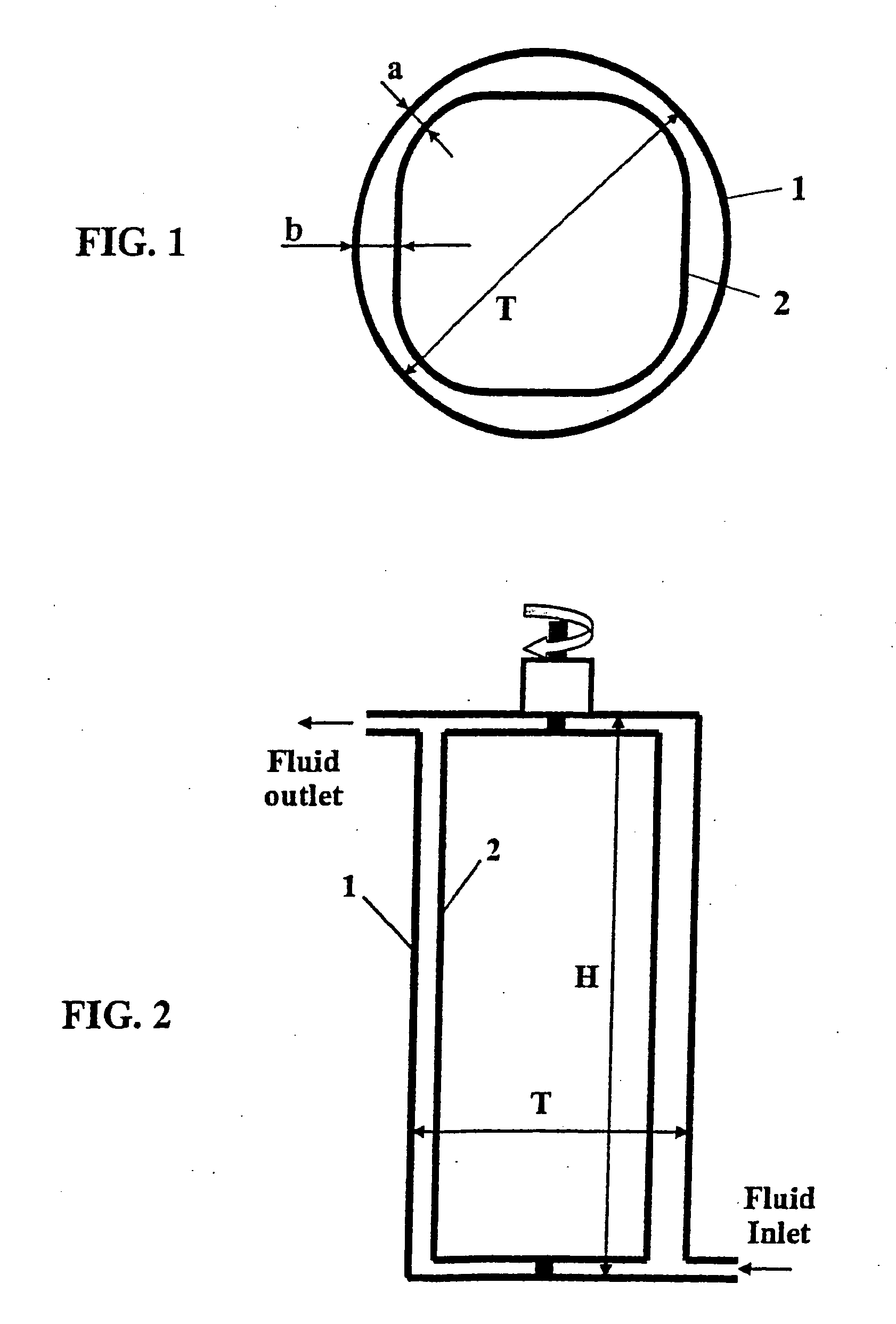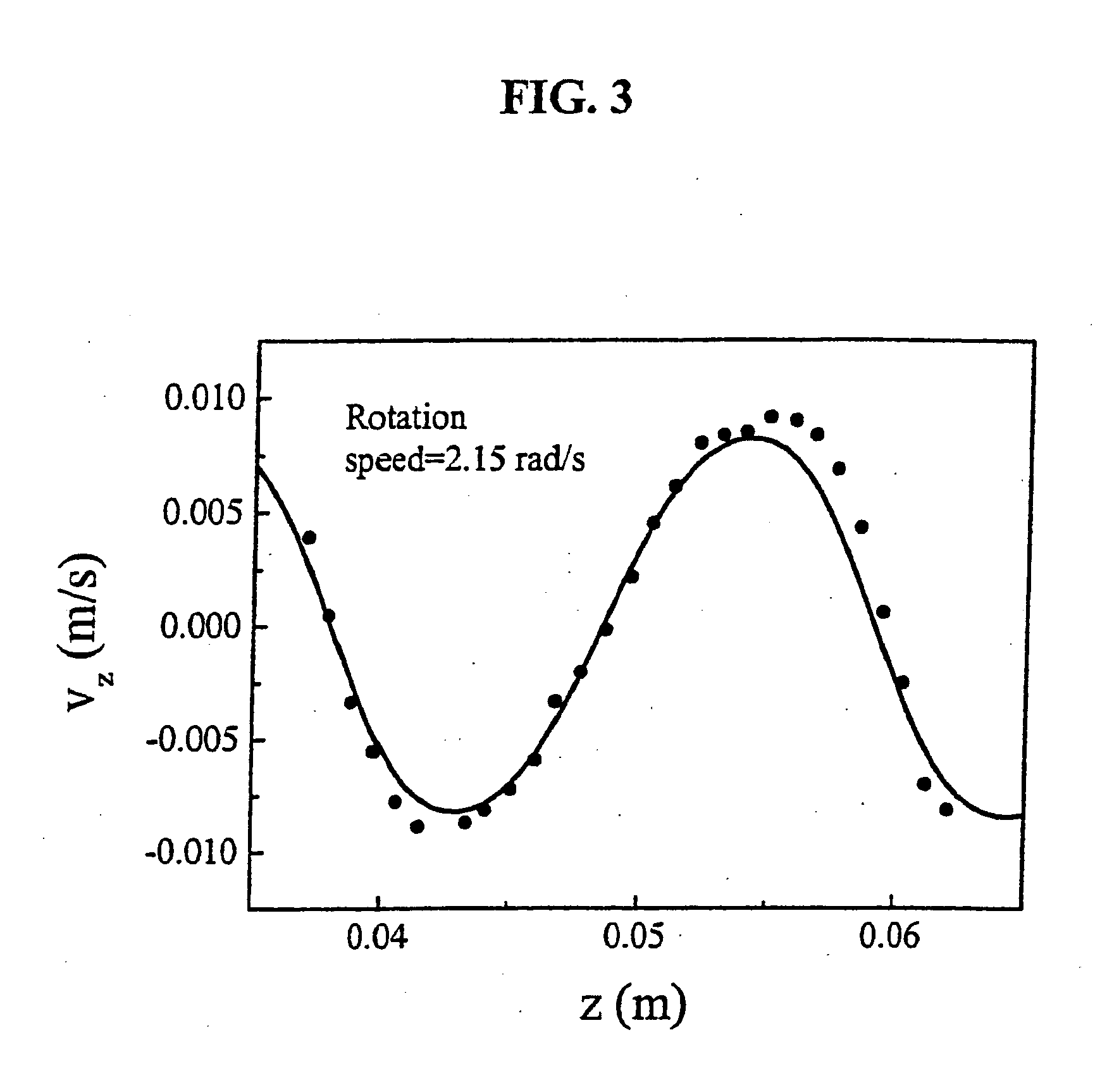Rotating Stirring Device with Substantially Narrow Distribution of Energy Dissipation Rate
a technology of rotating stirring and energy dissipation rate, which is applied in the direction of clay mixing apparatus, thin-film liquid gas reaction, transportation and packaging, etc., can solve the problems of small reactor volume, poor mixing in the gap, and damage to the bio-cells contained in the system
- Summary
- Abstract
- Description
- Claims
- Application Information
AI Technical Summary
Benefits of technology
Problems solved by technology
Method used
Image
Examples
example 1
Distribution of the Energy Dissipation Rate in a Stirred Tank (ST) Reactor
[0041]FIG. 8 shows a section view of the ST reactor of the prior art 3, composed of a cylindrical body 4, a six-blades Rushton turbine 5 and four baffles 6 symmetrically placed inside the reactor. The real sizes of the various elements of the reactor employed in the CFD simulations are as follows:
A=B=270 mm; C=90 mm; D=93 mm; E=18.6 mm; F=23.25 mm; G=27 mm.
[0042]Using Fluent, the volume-based distribution of the energy dissipation rate for the ST reactor geometrically defined above, has been computed with a rotation speed for the Rushton turbine being 8.08 rev / s. The results are reported in FIG. 10 with symbols (*). The abscissa is the normalized energy dissipation rate, defined as the energy dissipation rate divided by the volume-averaged energy dissipation rate. The volume-averaged energy dissipation rate at this rotation speed is computed to be 1.15 m2 / s3. It is seen that the distribution is very broad, cov...
example 2
Distribution of the Energy Dissipation Rate in a Taylor Couette (TC) Reactor
[0043]FIG. 9 shows a section view of the TC reactor of the prior art 7, composed of an outer cylinder 8, an inner cylinder 9. Both cylinders have cross-section of circular shape, and they are placed concentrically. The inner cylinder is rotating. The real sizes of the various elements of the reactor employed in the CFD simulations are as follows:
1=140 mm; J=8 mm; K=320 mm.
[0044]The distribution of the energy dissipation rate computed using Fluent for the TC reactor geometrically defined above is shown in FIG. 10 with symbols (o TC8). The rotation speed of the inner cylinder employed for the computations is 8.31 rev / s, and this leads to the computed volume-averaged energy dissipation rate to be 1.15 m2 / s3, equal to that in Example 1. The results indicate that the distribution of the energy dissipation rate of the TC reactor is narrower than that of the ST reactor, particularly without the tail in the range of...
example 3
Distributions of the Energy Dissipation Rate in the Reactors of a Triangle-Inner Cross-Section of the Inner Member (TIC) According to the Present Invention
[0045]According to the present invention as schematically illustrated in FIG. 1 and FIG. 2, e.g. a triangle cross-section of the inner member perpendicular to the rotation axis is employed for the CFD simulations. The real sizes of the various elements of the reactor employed in the simulations are as follows: T=140 mm; H=320 mm; a=8 mm, but three values have been employed for b=12 mm, 16 mm, and 22 mm, thus leading to three different designs of the present invention.
[0046]The distributions of the energy dissipation rate computed using fluent for the three reactors geometrically defined above are shown in FIG. 10 with symbols, * TIC8-12 for b=12 mm, □ TIC8-16 for b=16 mm, and ▴ TIC8-22 for b=22 mm. The rotation speeds of the inner member employed for the computations are 5.75 rev / s, 5.59 rev / s, and 5.72 rev / s, respectively for the...
PUM
| Property | Measurement | Unit |
|---|---|---|
| radii | aaaaa | aaaaa |
| radii | aaaaa | aaaaa |
| distance | aaaaa | aaaaa |
Abstract
Description
Claims
Application Information
 Login to View More
Login to View More - R&D
- Intellectual Property
- Life Sciences
- Materials
- Tech Scout
- Unparalleled Data Quality
- Higher Quality Content
- 60% Fewer Hallucinations
Browse by: Latest US Patents, China's latest patents, Technical Efficacy Thesaurus, Application Domain, Technology Topic, Popular Technical Reports.
© 2025 PatSnap. All rights reserved.Legal|Privacy policy|Modern Slavery Act Transparency Statement|Sitemap|About US| Contact US: help@patsnap.com



